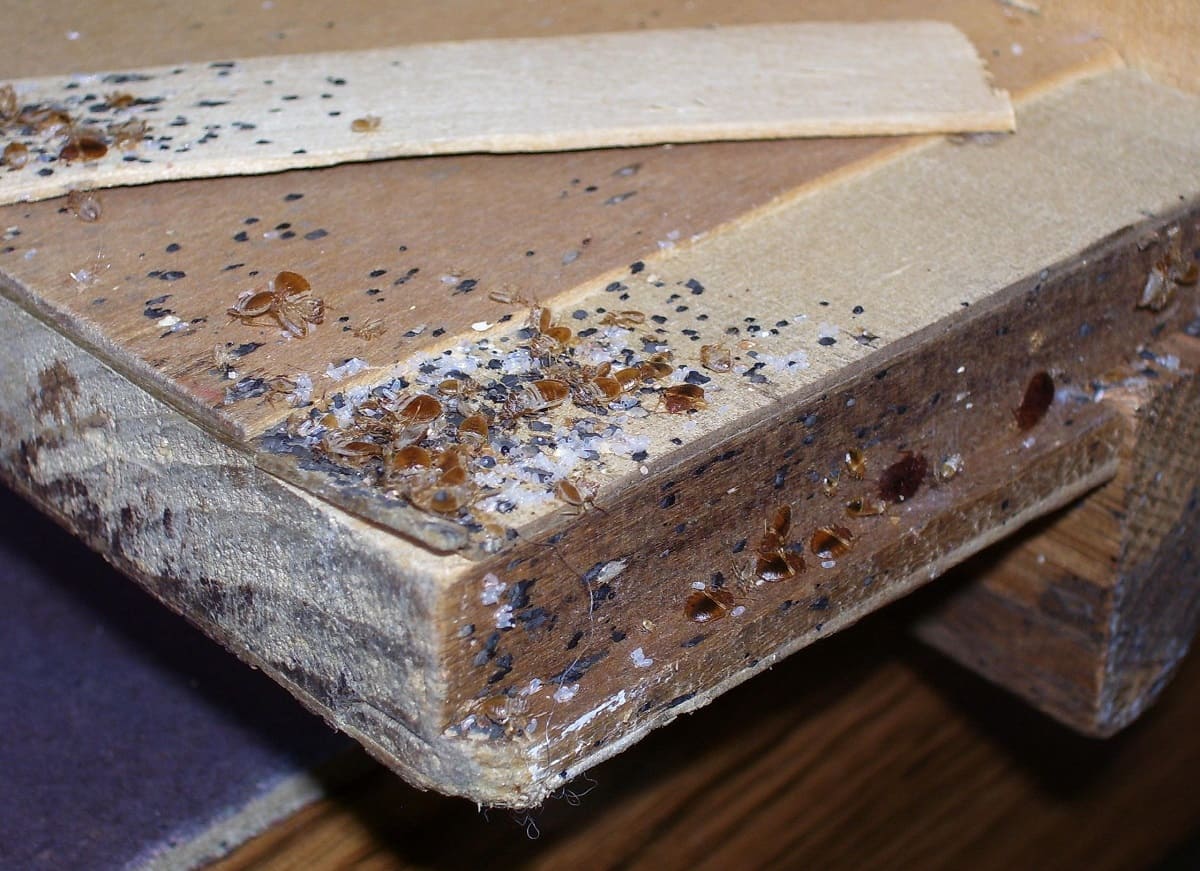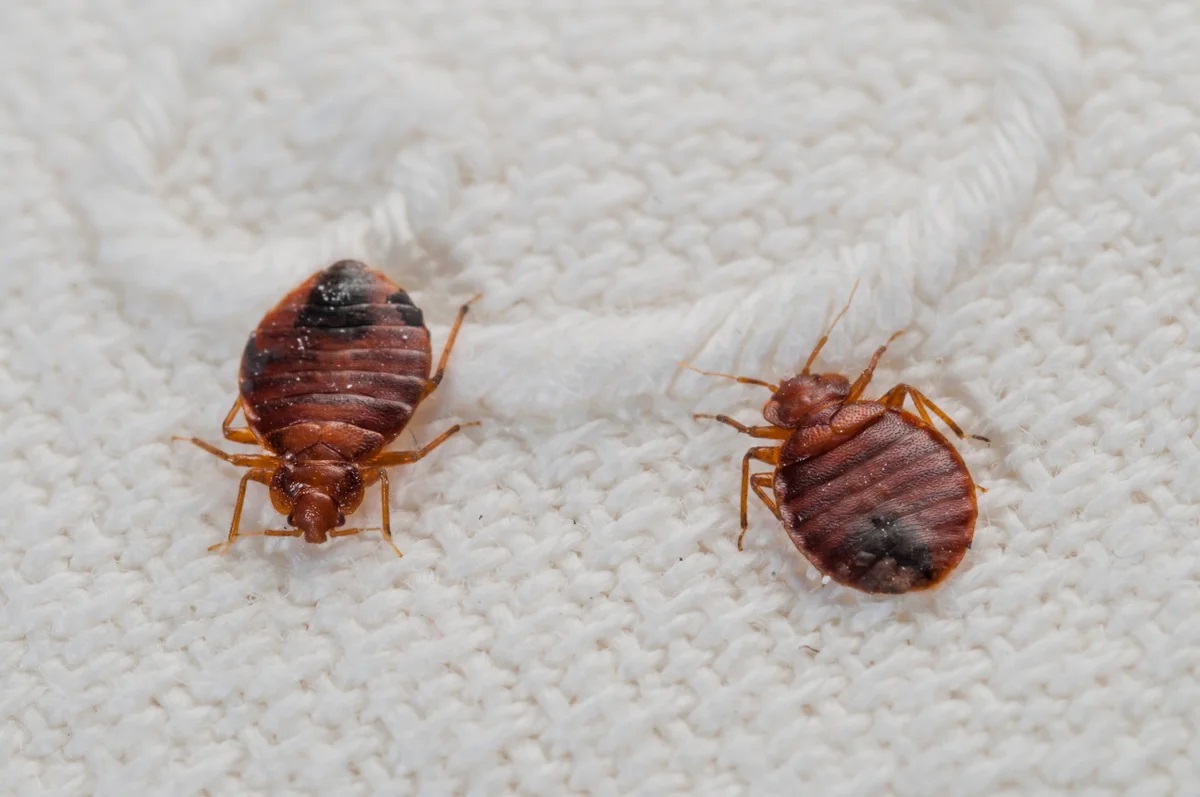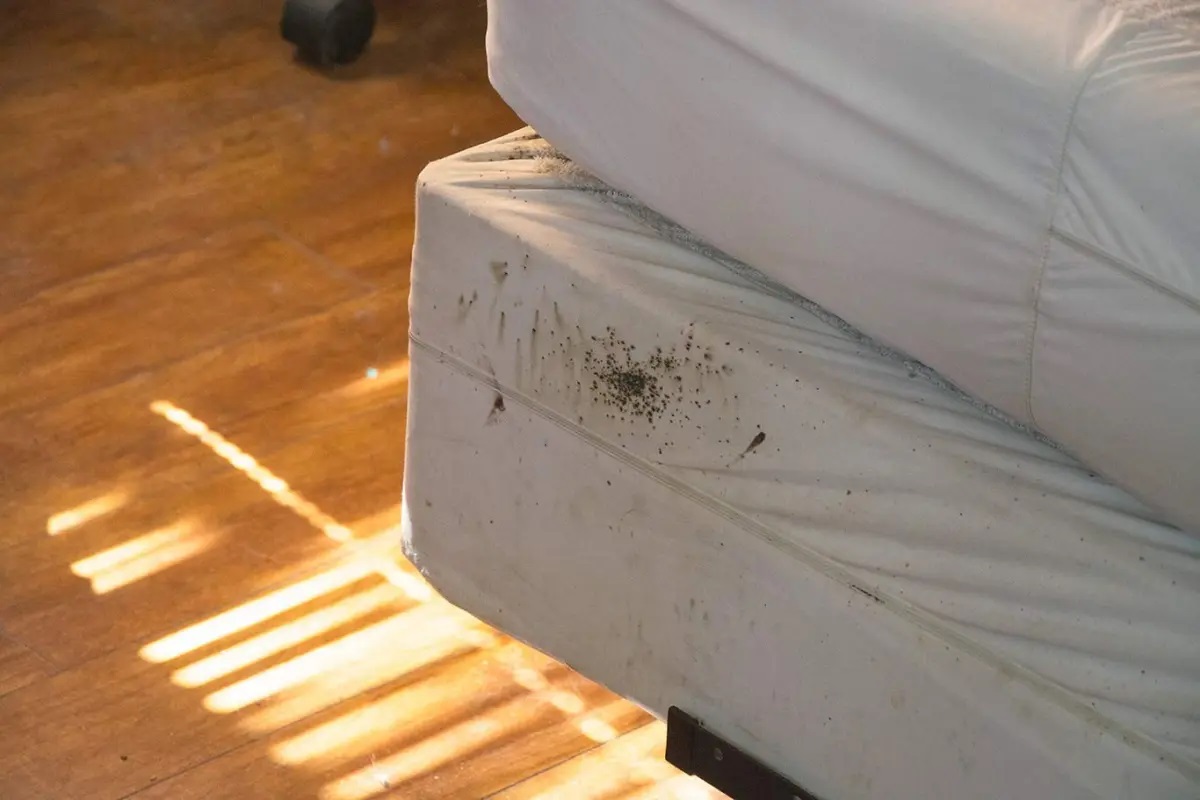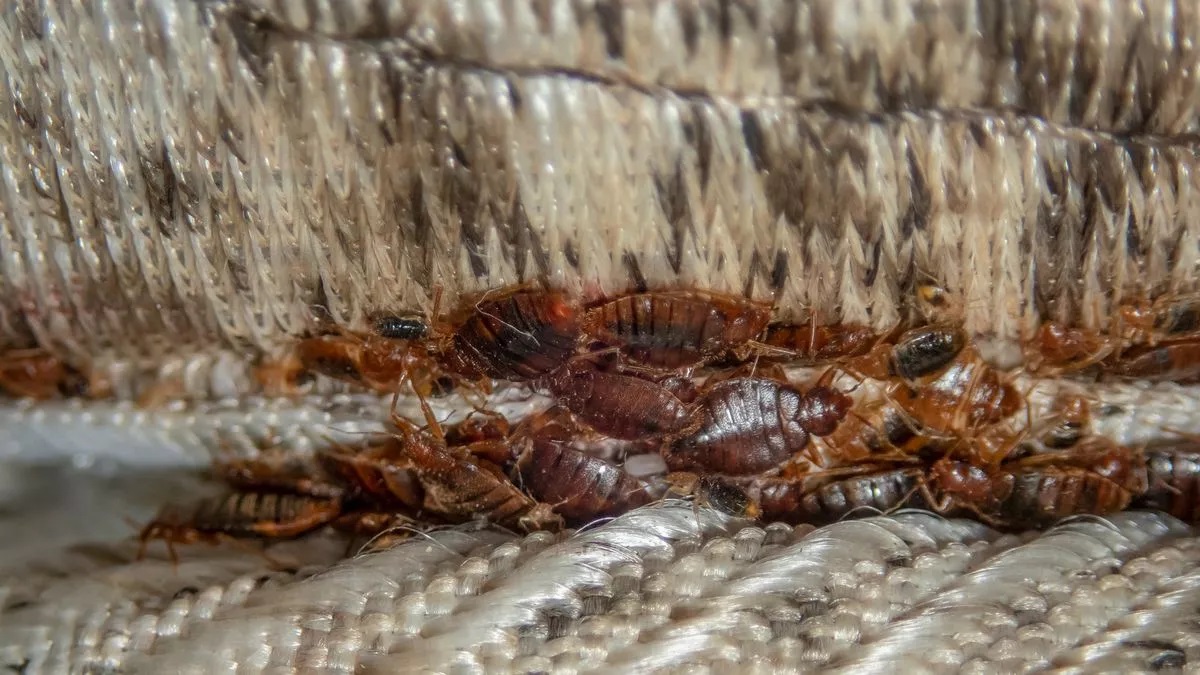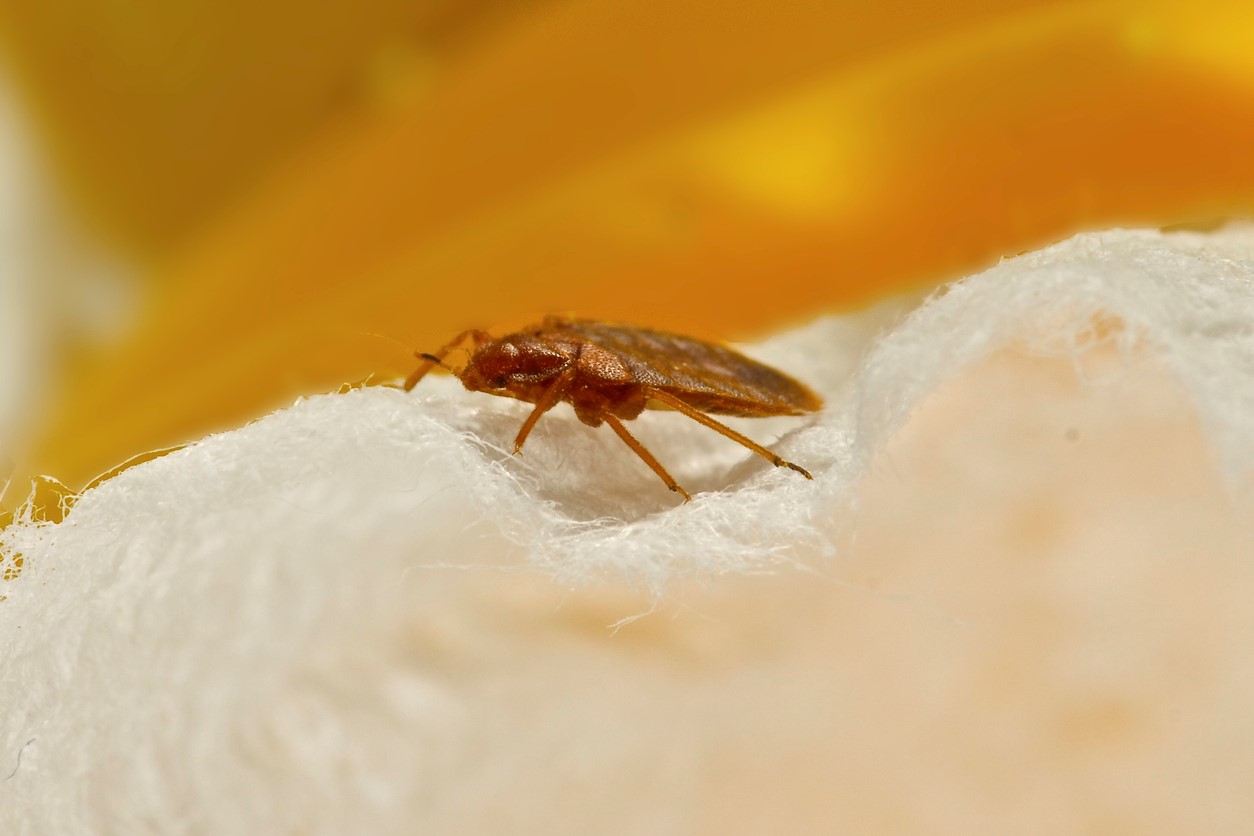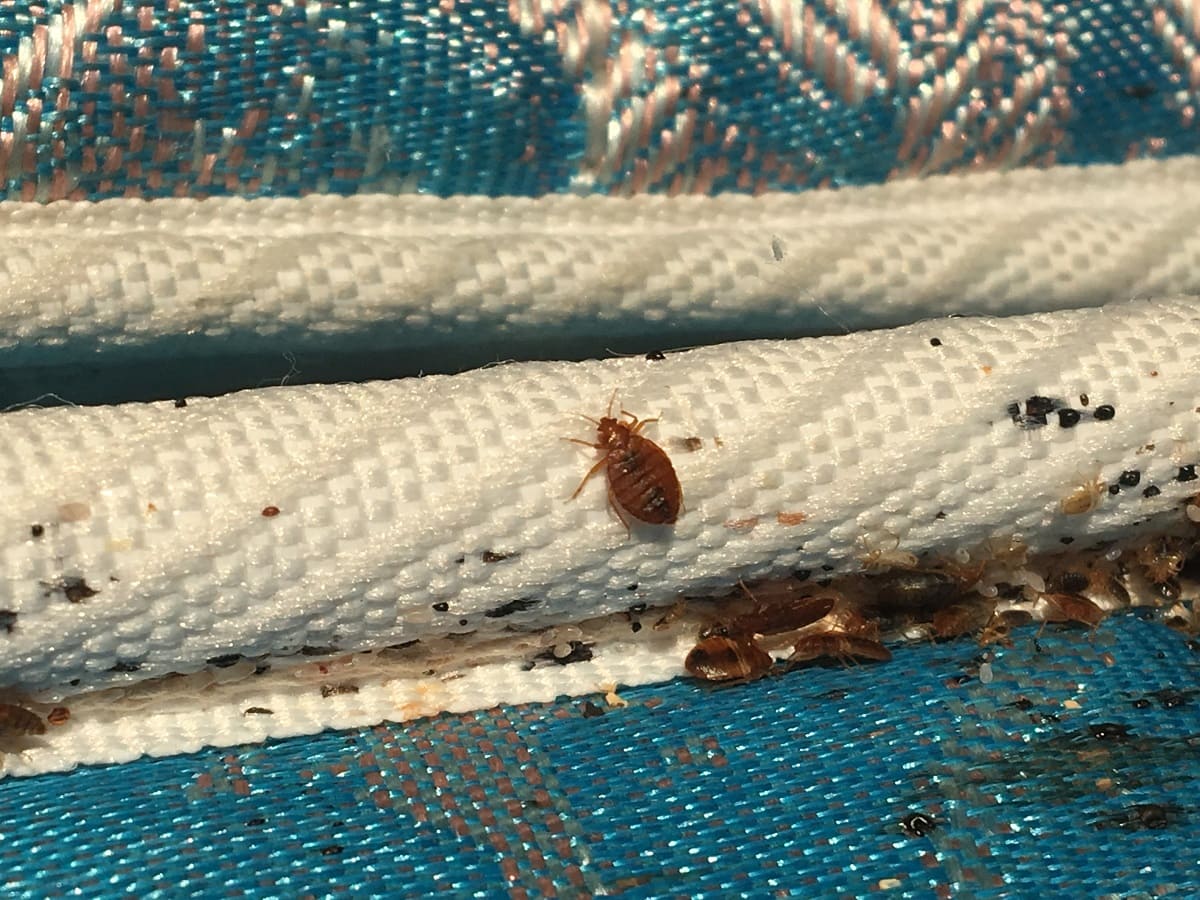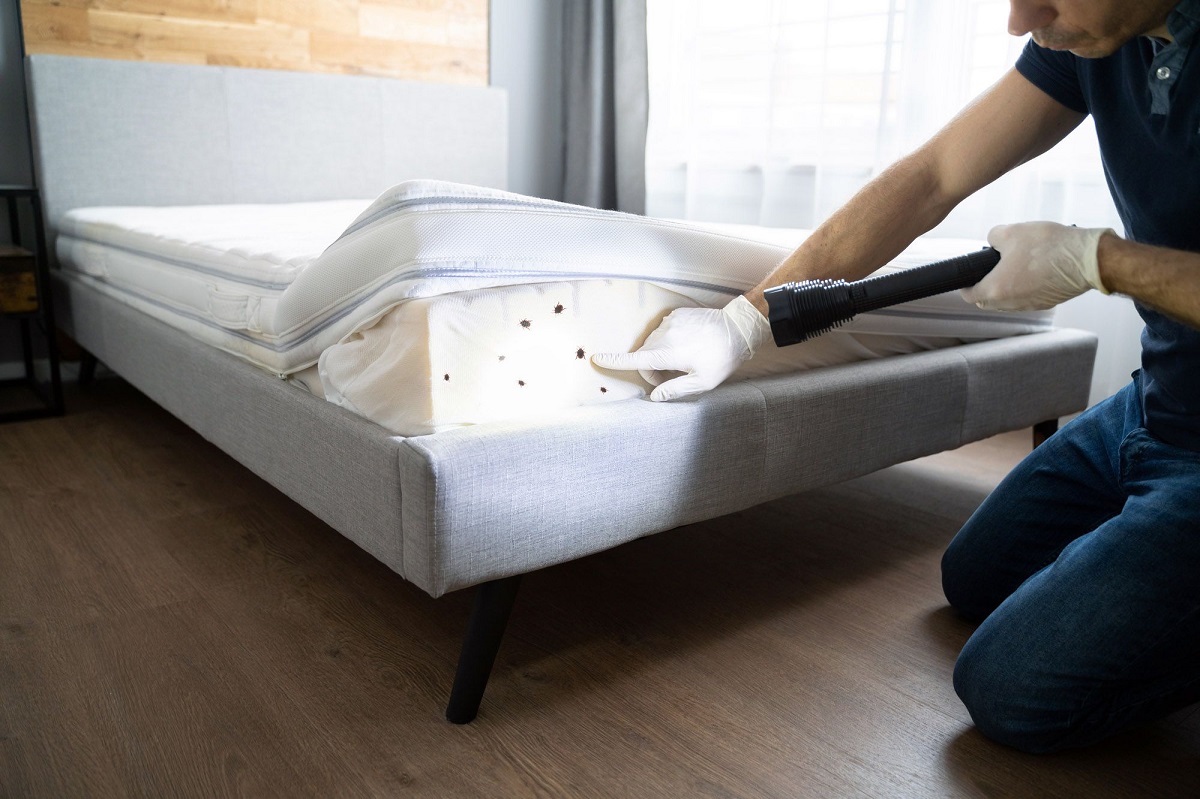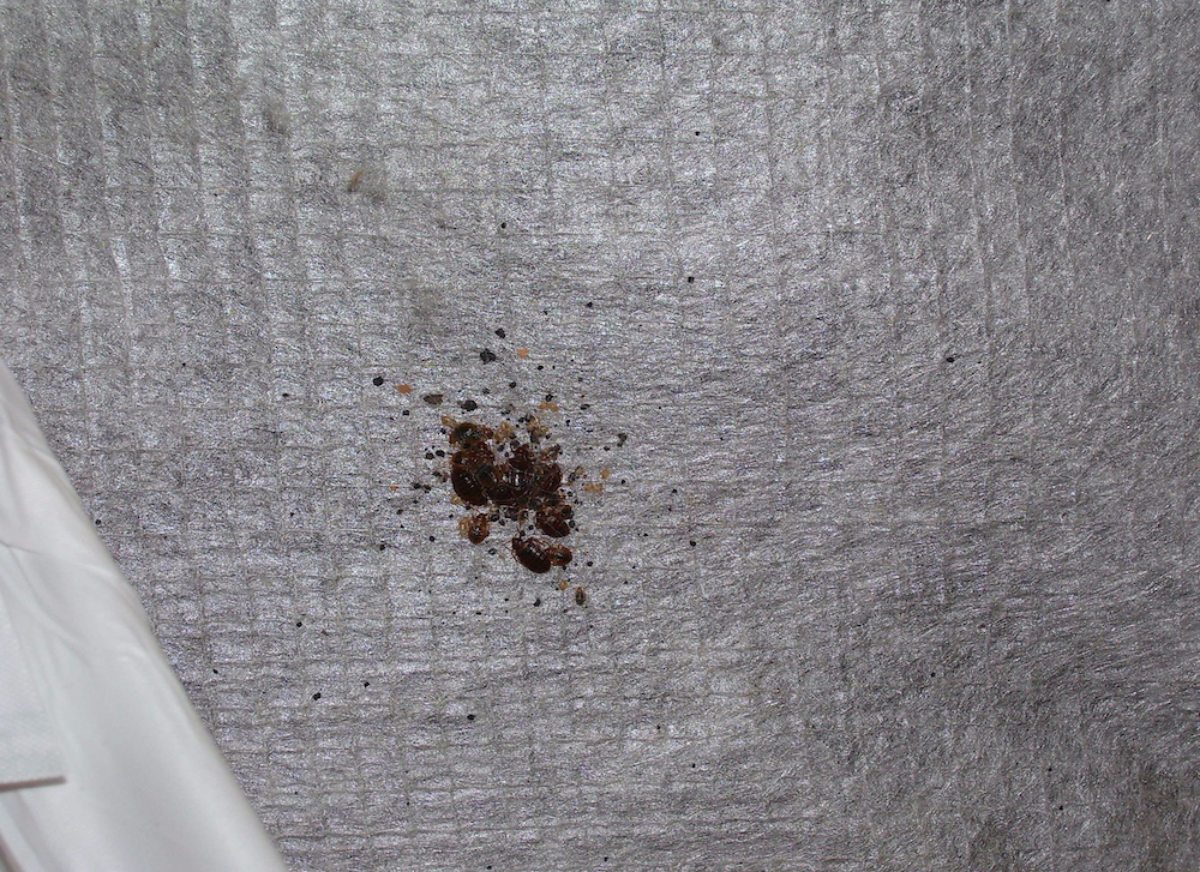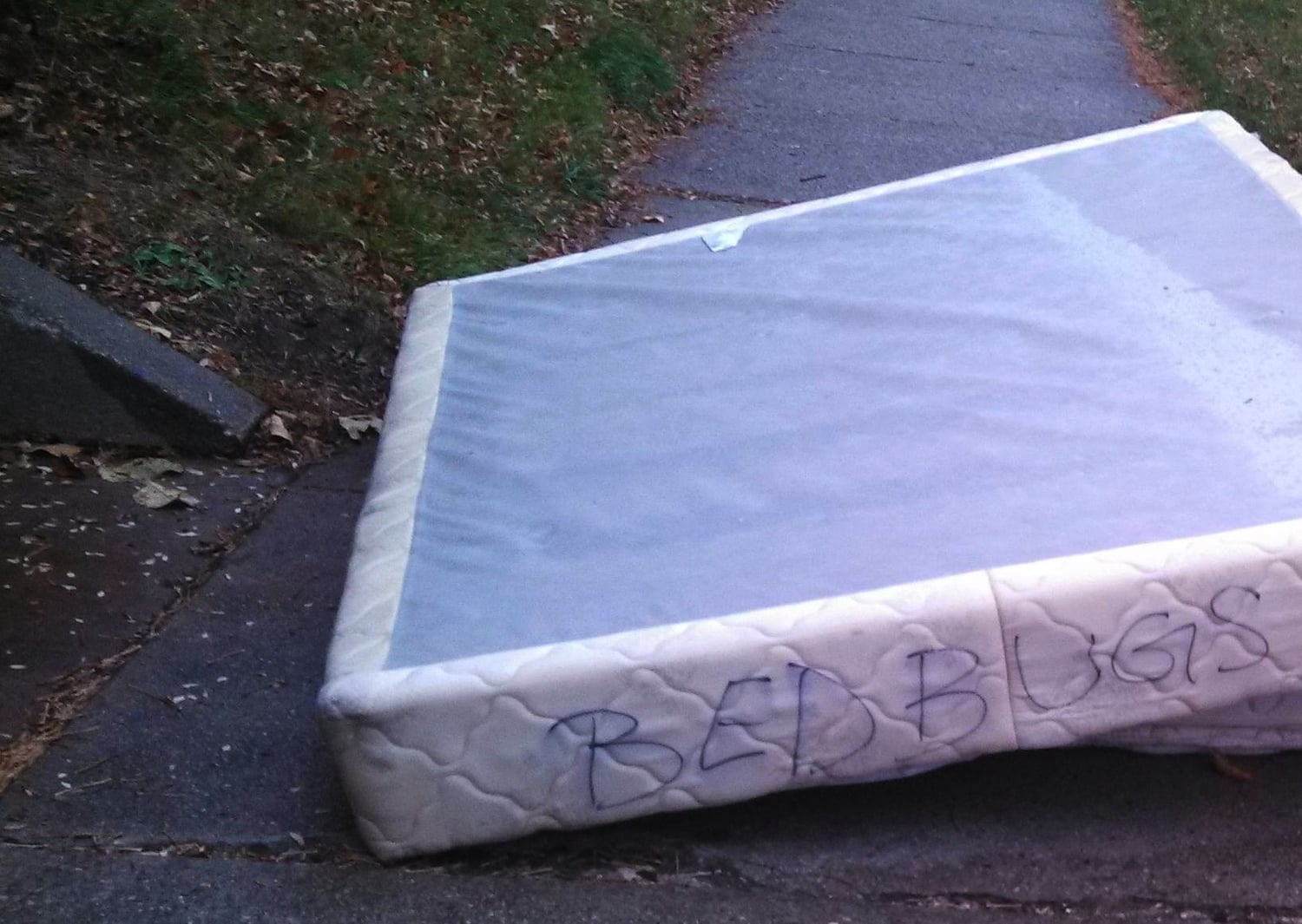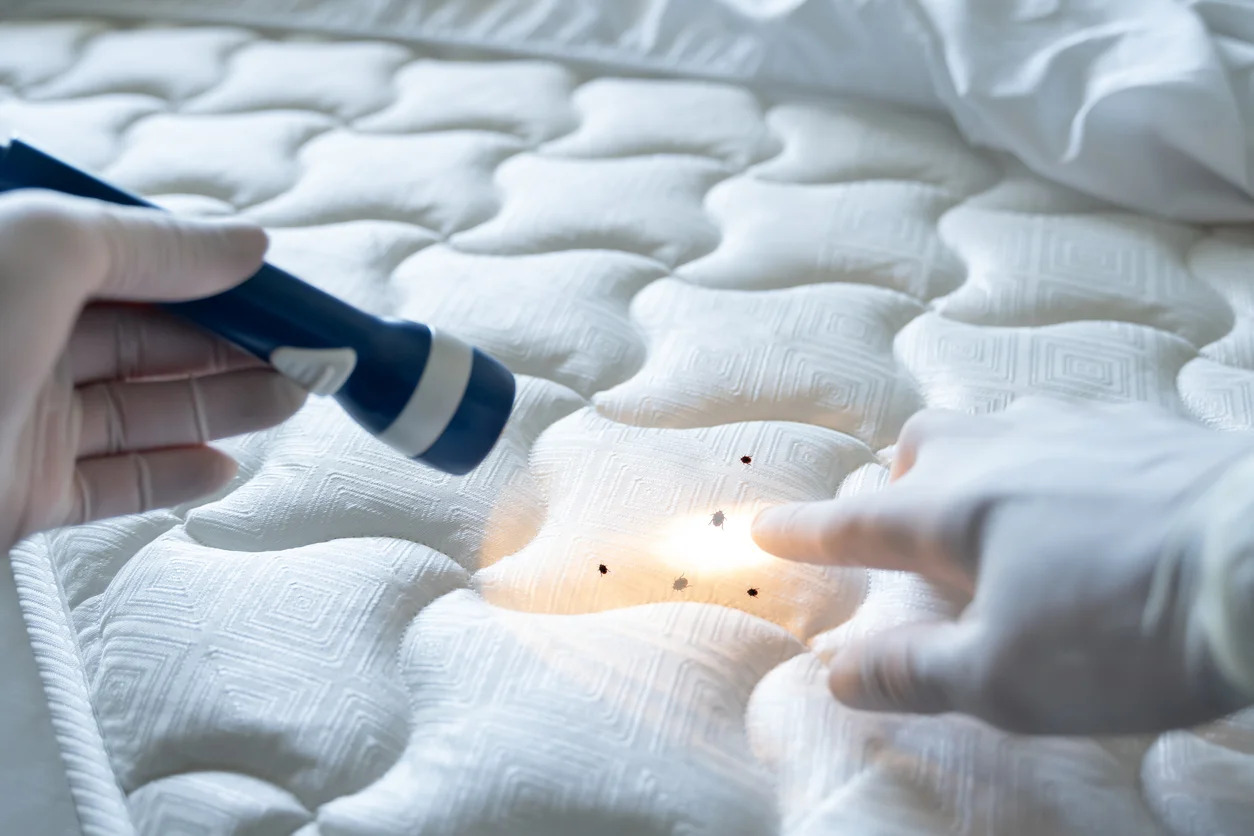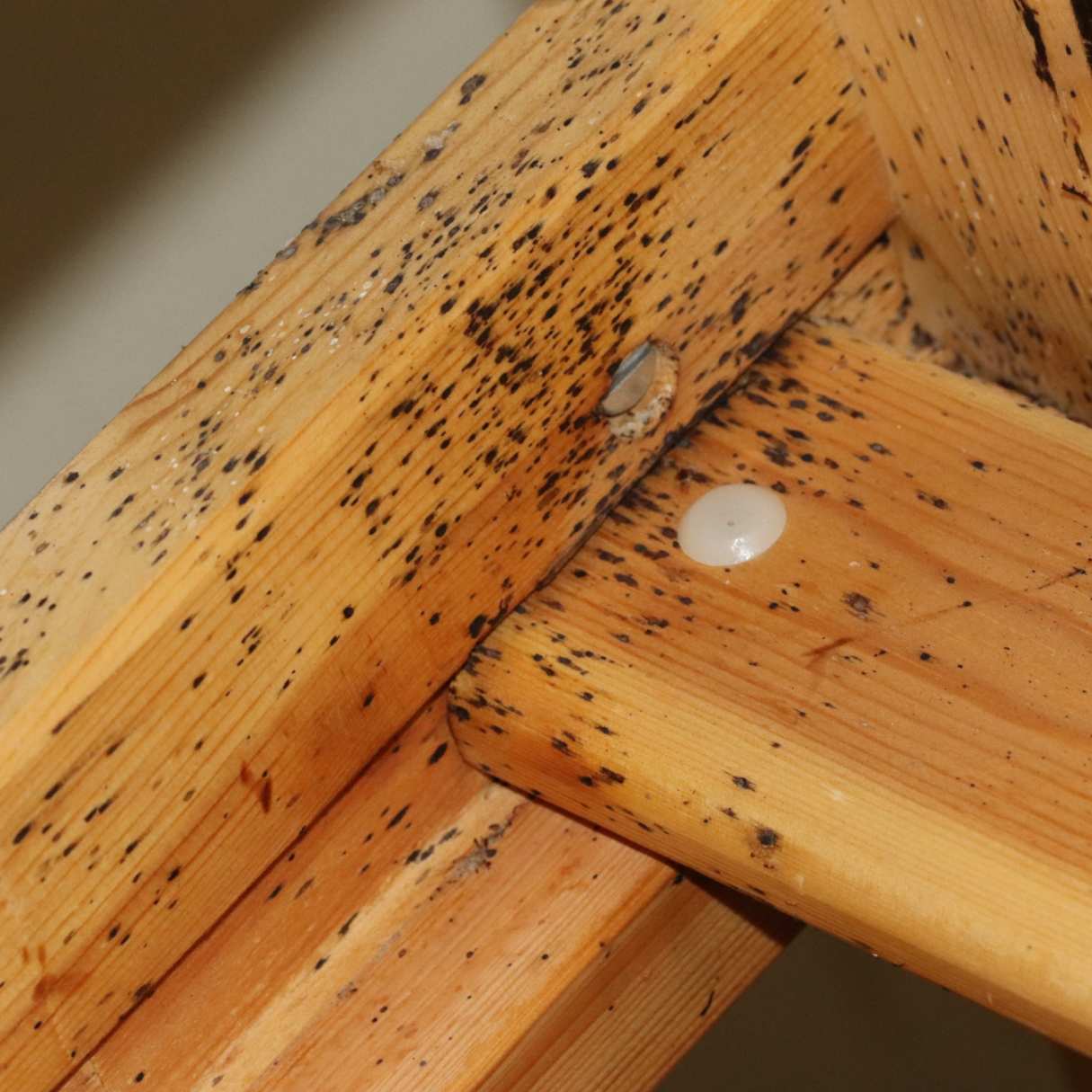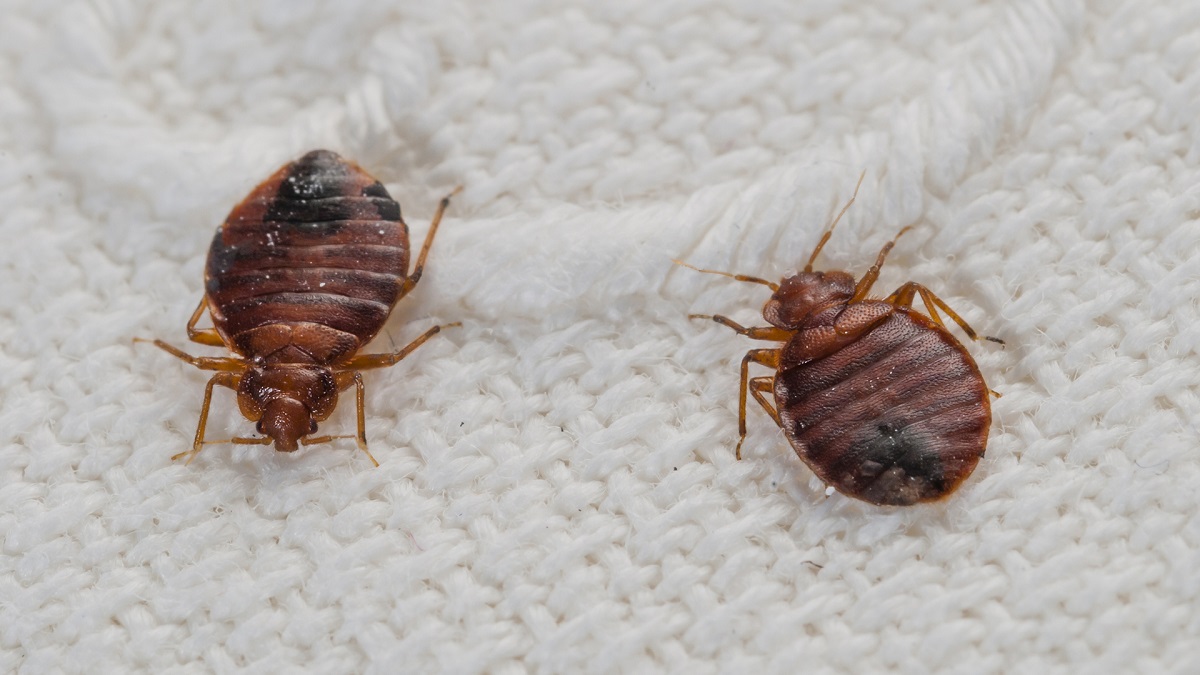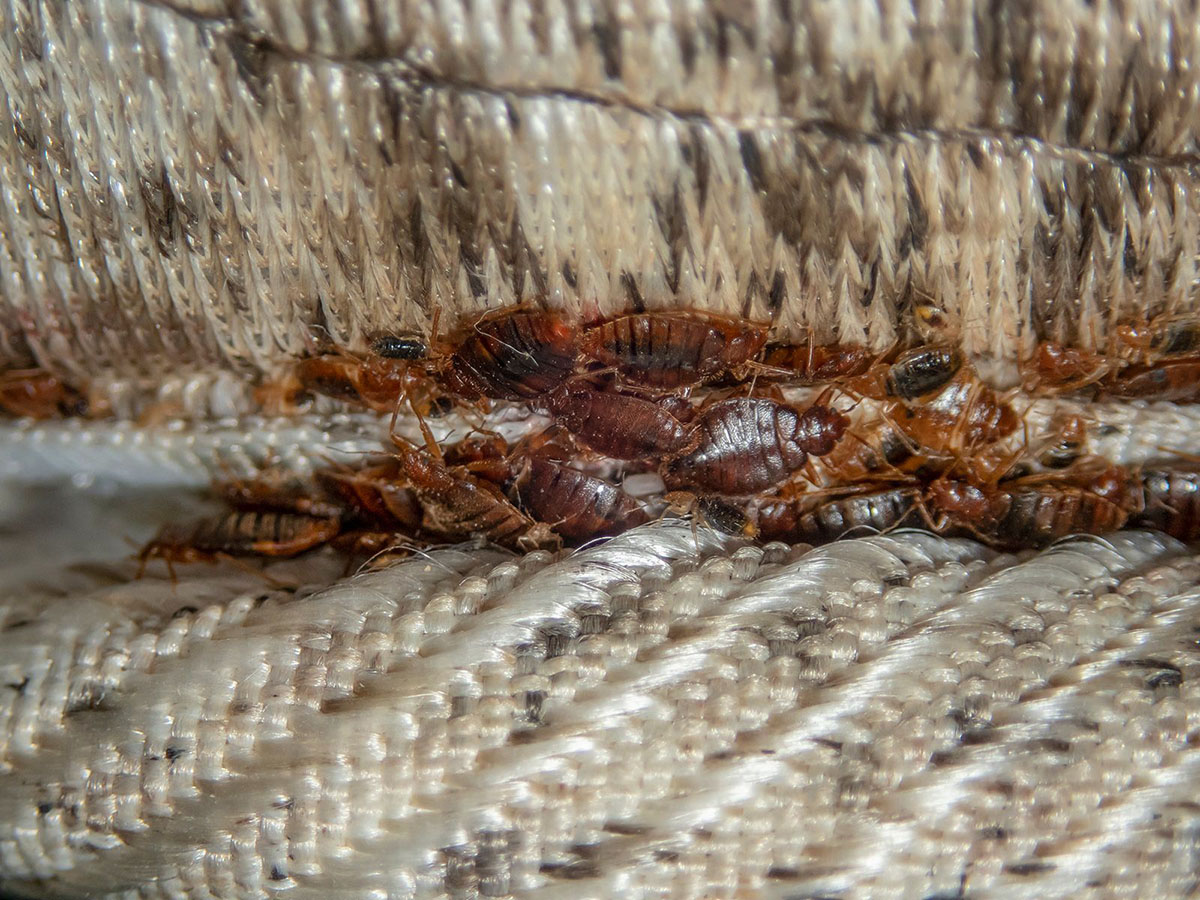Home>Furniture>Bedroom Furniture>How To Naturally Eliminate Bed Bugs


Bedroom Furniture
How To Naturally Eliminate Bed Bugs
Modified: October 28, 2024
Learn how to naturally eliminate bed bugs from your bedroom furniture. Our expert tips and remedies will help you get rid of these pests for good.
(Many of the links in this article redirect to a specific reviewed product. Your purchase of these products through affiliate links helps to generate commission for Storables.com, at no extra cost. Learn more)
Introduction
Welcome to your comprehensive guide on how to naturally eliminate bed bugs. Bed bugs can be a major nuisance, causing discomfort and disrupting your sleep. These small, wingless insects feed on human blood and can quickly infest your bedroom furniture, making it essential to tackle the problem as soon as possible.
Understanding the biology and behavior of bed bugs is crucial in effectively eliminating them. Bed bugs are nocturnal creatures that hide in cracks and crevices during the day and emerge at night to feed on their unsuspecting hosts. They can easily hitch a ride into your home through infested furniture, luggage, or clothing, making it important to take preventive measures to avoid a bed bug infestation.
Identifying the signs and symptoms of bed bug infestation is the first step in addressing the issue. Common indicators include itchy red bites on your body, blood stains on your sheets, and small dark spots (fecal matter) on your mattress or furniture. If you suspect a bed bug problem, it’s crucial to take action immediately to prevent the infestation from spreading.
Preventing bed bugs from entering your home is key to avoiding an infestation. Inspect second-hand furniture and clothing before bringing them indoors, and use protective encasements on your mattress and box spring. Additionally, be vigilant when staying at hotels or other accommodations, and store your luggage away from the bed to minimize the risk of bringing bed bugs home.
While chemical treatments are widely available for eliminating bed bugs, many people prefer natural remedies for the sake of their health and the environment. In the following sections, we will explore natural methods to eliminate bed bugs that are effective and safe for you and your home.
Key Takeaways:
- Natural methods like steam treatment, vacuuming, and essential oils offer effective and eco-friendly ways to eliminate bed bugs from bedroom furniture, promoting a healthier environment and minimizing the use of harsh chemicals.
- Bed bug-resistant encasements provide a protective barrier for mattresses and box springs, trapping existing bed bugs and preventing new infestations, offering peace of mind and safeguarding against these persistent pests.
Read more: Natural Bed Bug Remedies: Fact Vs. Fiction
Understanding Bed Bugs
Bed bugs, scientifically known as Cimex lectularius, are small, oval-shaped insects that belong to the Cimicidae family. Despite their name, bed bugs are not limited to infesting beds but can also be found in other furniture, carpets, and even electrical outlets.
One of the reasons why bed bugs are a challenge to eradicate is their ability to hide in tiny cracks and crevices, making them difficult to detect. Adult bed bugs are approximately the size of an apple seed, while younger nymphs and eggs are much smaller and harder to spot with the naked eye.
These nocturnal pests feed on the blood of humans and animals, typically during the night while their hosts sleep. They have piercing mouthparts that allow them to penetrate the skin and often leave behind itchy, red bite marks as evidence of their feeding activity.
Female bed bugs can lay hundreds of eggs throughout their lifespan, with each egg being approximately the size of a pinhead. These eggs can be laid singly or in clusters and are typically hidden in cracks and crevices near the bed bugs’ feeding sites. The eggs hatch into nymphs, which go through several molting stages until they reach adulthood.
Bed bugs are known for their resilience and ability to survive long periods without feeding. They can live for several months without a blood meal, which allows them to withstand starvation during times when hosts are unavailable. Additionally, bed bugs are adept at traveling and can easily latch onto luggage, clothing, or other items, allowing them to spread and infest new areas.
It’s important to note that bed bugs are not indicative of uncleanliness or poor hygiene. These pests can infest even the cleanest of homes, as they are primarily attracted to the warmth and carbon dioxide that humans emit. Therefore, anyone can be susceptible to a bed bug infestation regardless of their living conditions.
Understanding the biology, behavior, and habits of bed bugs is crucial in effectively eliminating them. By familiarizing yourself with their characteristics, you can take appropriate measures to prevent and address infestations in your bedroom furniture and throughout your home.
Signs and Symptoms of Bed Bug Infestation
Identifying the signs and symptoms of a bed bug infestation is crucial in order to take swift action and prevent the problem from worsening. While bed bugs are small and adept at hiding, there are several indicators that can help you determine their presence:
- Bite marks: Bed bugs typically feed on exposed areas of the body, such as the face, neck, arms, and legs. Their bites often appear as small, red, itchy bumps in a line or cluster. However, it’s important to note that bites alone may not definitively confirm a bed bug infestation, as reactions can vary from person to person.
- Blood stains on sheets: When bed bugs feed, they may leave behind small blood stains on your sheets or pillowcases. These stains are often a result of accidentally squashing a bug during or after feeding.
- Fecal spots: Bed bugs leave behind dark, rust-colored spots on your mattress, bedding, or furniture. These spots are a mixture of their feces and digested blood and are usually found near their hiding places or in areas where they have been feeding.
- Musty odor: In severe infestations, bed bugs can release a musty, sweet odor. This odor is often described as similar to the scent of raspberries or coriander. If you notice a distinct smell in your bedroom, it could be a sign of a significant bed bug presence.
- Visible bed bugs: In some cases, you may actually spot live bed bugs crawling on your mattress, furniture, or walls. Adult bed bugs are reddish-brown in color, while younger nymphs are smaller and lighter in color.
- Evidence of eggshells and molting: Bed bugs shed their skins as they grow, leaving behind empty exoskeletons. These shells, along with tiny, translucent eggs, can be found in the crevices and hiding places of your bedroom furniture.
If you notice any of these signs or suspect a bed bug infestation, it is important to take immediate action. The presence of bed bugs can disrupt your sleep, cause anxiety and stress, and potentially lead to further infestations if not addressed promptly.
In the next sections, we will explore effective methods for preventing and naturally eliminating bed bugs from your bedroom furniture.
Preventing Bed Bugs
Prevention is key when it comes to avoiding bed bug infestations in your bedroom furniture and throughout your home. By implementing proactive measures, you can significantly reduce the risk of these pests taking up residence. Here are some essential steps to prevent bed bugs:
- Inspect second-hand furniture: Before bringing any used furniture into your home, thoroughly inspect it for signs of bed bugs. Pay close attention to the seams, crevices, and joints where these pests like to hide. If you spot any evidence of infestation, including live bugs, eggs, or dark spots, avoid purchasing the furniture.
- Be cautious when traveling: When staying at hotels, hostels, or other accommodations, take precautions to prevent bringing bed bugs back with you. Inspect the bedding, mattress, and furniture for signs of infestation. Use a luggage rack or keep your suitcase elevated on a hard surface away from the bed. Upon returning home, wash and dry your clothing on high heat to kill any potential hitchhiking bed bugs.
- Use protective encasements: Encasing your mattress and box spring in bed bug-resistant covers can help prevent bed bugs from infesting these items. These encasements create a barrier that bed bugs cannot penetrate and prevent them from nesting in your sleeping area. Make sure to choose covers that are specifically designed to be bed bug-proof.
- Reduce clutter: Decluttering your bedroom and minimizing hiding spots can discourage bed bugs from establishing themselves. Keep your bedroom furniture clean, organized, and free from unnecessary items. This reduces the number of potential hiding places for bed bugs and makes it easier to detect any signs of infestation.
- Regularly vacuum and clean: Vacuuming your bedroom furniture, including mattresses, box springs, bed frames, and carpets, can help remove any bed bugs or eggs that may be present. Pay extra attention to cracks, crevices, and seams where these pests are likely to hide. After vacuuming, remember to empty the vacuum cleaner bag or canister in a sealed plastic bag and dispose of it properly.
- Seal cracks and crevices: Inspect your bedroom furniture for any cracks, crevices, or gaps where bed bugs could potentially hide. Seal these openings using caulk or another appropriate sealant to eliminate potential hiding spots and restrict their movement.
By following these preventive measures, you can significantly reduce the likelihood of bed bugs infesting your bedroom furniture. However, if you suspect an infestation or have already discovered bed bugs, it’s essential to take immediate action to eliminate them.
In the following sections, we will explore natural methods that can help you effectively eliminate bed bugs without the use of harsh chemicals.
Natural Ways to Eliminate Bed Bugs
When it comes to addressing a bed bug infestation, many people prefer to avoid the use of chemical pesticides and look for natural alternatives. The following methods can help you eliminate bed bugs from your bedroom furniture using safe and eco-friendly approaches:
- Steam treatment: Using a steam cleaner is an effective way to kill bed bugs at all stages of their life cycle, including eggs. Steam penetrates deep into cracks and crevices, where bed bugs hide, and the high temperature kills them on contact. Make sure to move the steam cleaner slowly and focus on infested areas such as mattresses, box springs, bed frames, and upholstery.
- Vacuuming: Regular vacuuming can help remove adult bed bugs, nymphs, and their eggs from infested furniture. Use a vacuum cleaner with a high-efficiency particulate air (HEPA) filter, which can effectively trap tiny bed bugs and their eggs. After vacuuming, seal the vacuum bag or empty the canister in a plastic bag and dispose of it outside your home.
- Diatomaceous Earth: Diatomaceous earth is a natural powder made from the fossilized remains of microscopic algae. It works by dehydrating and suffocating bed bugs. Sprinkle diatomaceous earth in cracks and crevices, along baseboards, and beneath furniture. Leave it for a few days, then vacuum it up. Make sure to use food-grade diatomaceous earth, as the type used for pool filtration can be harmful if inhaled.
- Essential oils: Certain essential oils are known for their repellent and insecticidal properties, making them useful in repelling and eliminating bed bugs. Peppermint, lavender, tea tree, and eucalyptus essential oils are commonly used for this purpose. Mix a few drops of your chosen essential oil with water and spray it on infested areas. Alternatively, soak cotton balls in the oil and place them in cracks and crevices.
- Bed bug-resistant encasements: While not a method for directly eliminating bed bugs, using bed bug-resistant encasements can help prevent them from infesting your mattress and box spring. These encasements are designed with special materials and zippers that bed bugs cannot penetrate. By enclosing your mattress and box spring in these encasements, you can trap any existing bed bugs inside and prevent new ones from infiltrating.
It’s important to note that these natural methods may require multiple treatments and diligent monitoring to ensure complete eradication of bed bugs. Additionally, it’s crucial to combine these methods with preventive measures to avoid reinfestation.
If your bed bug infestation is severe or persists despite your efforts, it may be necessary to consult a professional pest control company for further assistance.
By following these natural methods, you can effectively address a bed bug infestation in your bedroom furniture while minimizing the use of chemicals and promoting a healthier environment.
Read more: How To Trap Bed Bugs
Steam Treatment
Steam treatment is an effective and environmentally friendly method for eliminating bed bugs from your bedroom furniture. The high temperature of the steam effectively kills bed bugs at all stages of their life cycle, including eggs, making it a powerful tool in your arsenal against these pests.
To perform steam treatment, you’ll need a steam cleaner with a nozzle attachment. It’s important to use a steam cleaner that produces steam at a minimum temperature of 160°F (71°C) to ensure the bed bugs are effectively killed.
Here’s how to use steam treatment to eliminate bed bugs:
- Prepare the room: Start by removing any clutter or items that could obstruct the steam cleaner’s access to your furniture. Open windows for ventilation, as steam treatment can create moisture in the room.
- Thoroughly vacuum: Before using the steam cleaner, vacuum your bedroom furniture, including mattresses, box springs, bed frames, and upholstery. This will help remove any loose bed bugs, eggs, or debris, making the steam treatment more effective.
- Steam infested areas: Direct the nozzle of the steam cleaner into cracks, crevices, seams, and other hiding spots where bed bugs may reside. Move the steam cleaner slowly across the surface, making sure to treat every infested area thoroughly. Pay attention to the seams and edges of mattresses, the underside of furniture, and any other areas where bed bugs are likely to hide.
- Apply steam to other infested items: Aside from furniture, consider using steam treatment on other items that may be infested, such as curtains, rugs, and clothing. Steam can penetrate deep into the fibers and kill any bed bugs present.
- Monitor and repeat as needed: After the initial steam treatment, continue monitoring for any signs of bed bug activity. Depending on the severity of the infestation, you may need to repeat the steam treatment multiple times to ensure complete eradication.
When using steam treatment, it’s important to follow the manufacturer’s instructions for your specific steam cleaner model. Be cautious not to over-saturate your furniture, as excessive moisture can lead to damage.
Remember to allow your furniture to dry completely after the steam treatment. Proper ventilation and airflow can help expedite the drying process. Additionally, consider using a mattress encasement after treatment to prevent reinfestation.
Steam treatment is a highly effective method for naturally eliminating bed bugs from your bedroom furniture. However, in severe infestations, it’s advisable to consult a professional pest control expert for further assistance.
Vacuum and steam clean your mattress, furniture, and carpets regularly to eliminate bed bugs and their eggs. Dispose of the vacuum bag in a sealed plastic bag.
Vacuuming
Vacuuming is a practical and effective method for eliminating bed bugs from your bedroom furniture. It helps remove adult bed bugs, nymphs, and their eggs, reducing their population and limiting their ability to reproduce. Regular vacuuming can significantly contribute to your efforts in eradicating bed bugs.
Here’s how to properly vacuum your bedroom furniture to eliminate bed bugs:
- Choose a vacuum cleaner: Use a vacuum cleaner with a high-efficiency particulate air (HEPA) filter. HEPA filters are designed to trap and contain tiny particles, including bed bugs and their eggs, making them more effective for this purpose.
- Prepare the room: Before you start vacuuming, clear the area by removing any clutter or obstacles that may hinder your cleaning process. This allows for better access to infested areas.
- Begin with bedding and mattress: Start by removing all bedding, including sheets, pillowcases, and mattress covers. Be careful not to shake or disturb the bedding, as this could release bed bugs or their eggs into the air. Launder the bedding in hot water and dry it on high heat to kill any remaining bed bugs.
- Thoroughly vacuum the mattress: Use the vacuum cleaner’s upholstery attachment or a small nozzle to vacuum the entire surface of the mattress. Pay close attention to seams, crevices, tufts, and any other areas where bed bugs may hide. Move the vacuum cleaner slowly and systematically to ensure you cover the entire surface.
- Vacuum the box spring and bed frame: Next, focus on vacuuming the box spring and bed frame. Pay special attention to any cracks, joints, or other hiding spots where bed bugs may be present. If possible, disassemble the bed frame to thoroughly clean all components.
- Clean surrounding areas: Extend your vacuuming to the surrounding areas, including baseboards, carpets, curtains, and upholstered furniture. Bed bugs are known to hide in these areas, so vacuum them thoroughly to remove any potential hiding spots.
- Empty and dispose of the vacuum bag or canister: After vacuuming, carefully remove the vacuum bag or empty the canister in a sealed plastic bag. This prevents any live bed bugs or eggs from escaping and reinfesting your home. Dispose of the bag or contents outside of your living space.
- Monitor and repeat as necessary: Keep a close eye on your bedroom furniture for any signs of bed bug activity. If you notice any persistent issues, repeat the vacuuming process as needed to ensure thorough elimination.
Regular vacuuming can significantly reduce bed bug populations and help control infestations. However, it’s essential to combine vacuuming with other natural methods, such as steam treatment or the use of diatomaceous earth, to ensure comprehensive eradication.
Remember to follow proper disposal practices and maintain good hygiene when vacuuming to prevent the spread of bed bugs to other areas of your home. If your infestation persists or escalates, consider consulting a professional pest control service for additional assistance.
Diatomaceous Earth
Diatomaceous earth is a natural and non-toxic powder made from the fossilized remains of diatoms, which are tiny aquatic organisms. It is widely used as an effective method to eliminate bed bugs and other insects. The microscopic sharp edges of diatomaceous earth damage the protective exoskeleton of bed bugs, causing them to dehydrate and eventually die.
Here’s how to use diatomaceous earth to eliminate bed bugs from your bedroom furniture:
- Choose food-grade diatomaceous earth: It’s important to use food-grade diatomaceous earth, which is safer for use around humans and pets. This type of diatomaceous earth is free from harmful chemicals and additives.
- Protect yourself: Wear gloves and a dust mask during the application process to avoid direct contact with the powder and inhalation of any fine particles.
- Locate infested areas: Identify the cracks, crevices, and hiding spots where bed bugs are likely to reside. Common areas include mattress seams, bed frames, carpets, and furniture joints.
- Apply diatomaceous earth: Using a dust applicator or a small brush, lightly dust a thin layer of diatomaceous earth along the infested areas. Focus on areas where bed bugs are most likely to come into contact with the powder. Be thorough but avoid excessive application, as a heavy layer may render it less effective.
- Leave the powder undisturbed: Allow the diatomaceous earth to remain undisturbed for at least a few days. During this time, bed bugs that come into contact with the powder will be affected by the desiccating effects of the diatomaceous earth.
- Repeat and monitor: Repeat the application as necessary, especially if you suspect that some areas were missed or if the infestation persists. Continuously monitor the infested areas for any signs of bed bug activity.
- Clean up: After a few days, carefully vacuum the diatomaceous earth and dispose of the collected residue in a sealed plastic bag. Make sure to clean the vacuum cleaner thoroughly to remove any bed bugs or eggs that may have been captured.
Diatomaceous earth is a natural substance and a low-risk method for eliminating bed bugs. However, it is important to note that it may take some time for the diatomaceous earth to take effect, as it primarily works by desiccating the pests rather than killing them instantly. Additionally, diatomaceous earth is most effective when applied in dry conditions, so avoid getting it damp or wet.
While diatomaceous earth can be effective in controlling and reducing bed bug populations, it may not completely eliminate a severe infestation. In such cases, it is advisable to seek professional assistance from a pest control expert.
Remember to follow the manufacturer’s instructions and take necessary precautions when handling diatomaceous earth to ensure its safe and effective use.
Essential Oils
Essential oils have gained popularity as natural remedies for various purposes, including repelling and eliminating bed bugs. Certain essential oils contain compounds that are known to have insecticidal and repellent properties, making them a potential ally in your battle against these pests. Here are some commonly used essential oils for bed bug control:
- Peppermint oil: Peppermint oil has a strong, refreshing scent that bed bugs dislike. Its active ingredient, menthol, acts as a natural repellent against these pests. Dilute a few drops of peppermint oil with water in a spray bottle and spritz it around infested areas, such as cracks, crevices, and bedding.
- Lavender oil: Lavender oil has a calming fragrance that humans find pleasant but bed bugs find irritating. Its strong odor acts as a deterrent, potentially discouraging bed bugs from settling in your bedroom furniture. Mix a few drops of lavender oil with water and spray it on infested areas or soak cotton balls in the oil and place them strategically around your bedroom.
- Tea tree oil: Tea tree oil is widely recognized for its potent antimicrobial properties. It contains terpenoids that have insecticidal effects on bed bugs. Dilute tea tree oil with water and use it to wipe down infested surfaces, including mattress seams, bed frames, and furniture. Alternatively, you can mix a few drops with water in a spray bottle and apply it directly to the affected areas.
- Eucalyptus oil: Eucalyptus oil has a strong, camphor-like aroma that can repel bed bugs. Its active compound, eucalyptol, has insect-repellent qualities. Mix a few drops of eucalyptus oil with water and spray it around infested areas or use it to wipe down surfaces where bed bugs are suspected to reside.
When using essential oils, keep the following tips in mind:
- Always dilute essential oils with water or a carrier oil as direct application may cause skin irritation or other adverse reactions.
- Test a small area or patch of skin before using essential oils to ensure you are not allergic or sensitive to them.
- Remember that essential oils provide temporary relief or can act as a deterrent, but they may not completely eliminate a bed bug infestation. They are best used as part of an integrated pest management approach.
- Continue to monitor infested areas and take additional measures if the problem persists or worsens.
While essential oils can be effective in repelling and deterring bed bugs, the results may vary depending on factors such as the severity of the infestation and the specific odor preferences of the bed bugs present. For severe infestations, it’s advisable to seek professional pest control assistance.
Remember that essential oils should be used with caution, and if you have pets, ensure that the oils used are safe for their species. Consult with a veterinarian or aromatherapist when using essential oils around pets.
Integrating essential oils into your pest control routine may help in your efforts to naturally combat bed bugs and keep them at bay.
Read more: How To Kill A Bed Bug
Bed Bug-Resistant Encasements
Bed bug-resistant encasements are protective covers designed specifically to prevent bed bugs from infesting your mattress and box spring. These encasements create a barrier that bed bugs cannot penetrate, effectively trapping any existing bed bugs inside and preventing new ones from infiltrating.
Here’s how bed bug-resistant encasements can help in your battle against these pests:
- Encase your mattress and box spring: Bed bugs tend to hide in the crevices and seams of mattresses and box springs, making them difficult to detect and eliminate. By encasing your mattress and box spring with bed bug-resistant covers, you create a protective barrier that prevents bed bugs from accessing these areas.
- Trap bed bugs inside: If bed bugs are already present in your mattress or box spring, the encasements trap them inside, restricting their movement and preventing them from reaching you during the night. This can help minimize the potential for bites and reduce the spread of the infestation.
- Prevent new infestations: Bed bug-resistant encasements act as a preventive measure, ensuring that any bed bugs attempting to infest your mattress or box spring are unable to do so. The tight-knit fabric and specially designed closure system create a barrier that bed bugs cannot penetrate, effectively protecting your sleeping area.
- Make bed bug detection easier: Bed bug-resistant encasements are typically made of light-colored material, making it easier to visually detect the presence of bed bugs or their fecal spots. Regular inspection of the encasements can help you identify any signs of bed bug activity and take appropriate action promptly.
- Enhance ease of maintenance: The encasements are designed to be durable and easy to clean. Most bed bug-resistant covers are machine washable, allowing you to maintain a clean and hygienic sleeping environment. Regularly washing the encasements helps remove any potential bed bugs and keeps your mattress and box spring protected over the long term.
When selecting bed bug-resistant encasements, keep the following tips in mind:
- Choose encasements specifically designed for bed bug protection. Look for products labeled as “bed bug-proof” or “bed bug-resistant.”
- Ensure the encasements fully enclose your mattress and box spring, with a tight seal and secure closure mechanism.
- Check the material composition of the encasements to ensure they are strong, durable, and resistant to tearing.
- Consider encasements that have been tested and certified by reputable organizations for their effectiveness against bed bugs.
- Follow the manufacturer’s instructions for installation and care to maximize the longevity and efficacy of the encasements.
While bed bug-resistant encasements are effective in preventing bed bugs from infesting your mattress and box spring, they do not eliminate or eradicate existing bed bug populations in other areas of your home. For best results, combine the use of encasements with other natural methods, such as steam treatment or vacuuming, to ensure a comprehensive approach to bed bug control.
By utilizing bed bug-resistant encasements, you can safeguard your mattress and box spring, creating an additional layer of protection against these persistent pests.
Conclusion
Bed bugs can be a frustrating and persistent problem, but with the right knowledge and tools, you can effectively eliminate them from your bedroom furniture. In this comprehensive guide, we have explored various natural methods to combat bed bugs and keep them at bay.
Understanding the biology and behavior of bed bugs is crucial in effectively addressing infestations. By familiarizing yourself with their signs and symptoms, you can quickly identify an infestation and take prompt action. Prevention is equally important, and by implementing measures such as inspecting second-hand furniture, being cautious while traveling, and using bed bug-resistant encasements, you can significantly reduce the risk of these pests entering your home.
Within the realm of natural remedies, steam treatment has proven to be a powerful weapon against bed bugs. The high temperature of steam penetrates deep into cracks and crevices, killing bed bugs and their eggs. Vacuuming is another valuable tool, as it helps physically remove bed bugs from furniture and carpets, reducing the population and hindering their ability to reproduce.
Diatomaceous earth, a natural powder, works by dehydrating and suffocating bed bugs, while certain essential oils have repellent and insecticidal properties that can deter and eliminate these pests. Lastly, bed bug-resistant encasements provide a protective barrier for your mattress and box spring, trapping existing bed bugs and preventing new infestations.
While these natural methods can be effective in addressing mild to moderate infestations, severe infestations may require professional assistance. It’s important to remain vigilant and continue monitoring infested areas to ensure thorough elimination.
Remember, prevention is key in keeping bed bugs at bay, so be proactive in adopting preventive measures, maintaining cleanliness, and practicing vigilance during your travels and interactions with second-hand furniture.
By combining these natural methods, following preventive measures, and seeking professional help when needed, you can regain control of your bedroom furniture and eliminate bed bugs, ensuring a peaceful and bug-free sleep environment.
Frequently Asked Questions about How To Naturally Eliminate Bed Bugs
Was this page helpful?
At Storables.com, we guarantee accurate and reliable information. Our content, validated by Expert Board Contributors, is crafted following stringent Editorial Policies. We're committed to providing you with well-researched, expert-backed insights for all your informational needs.
